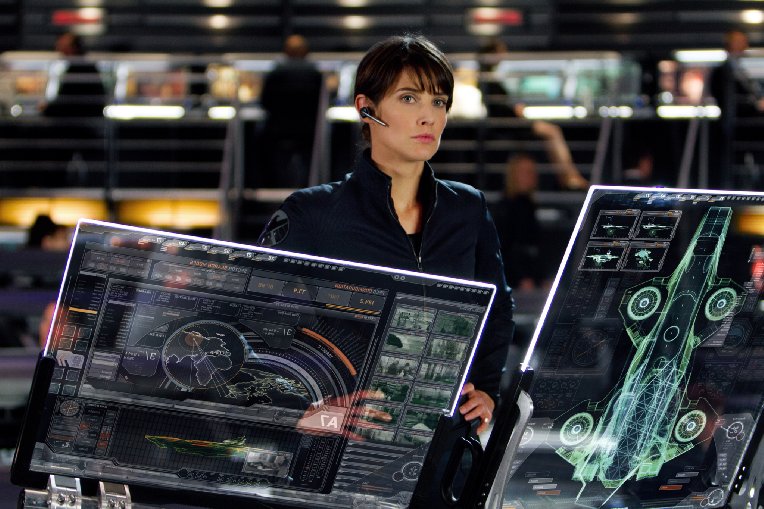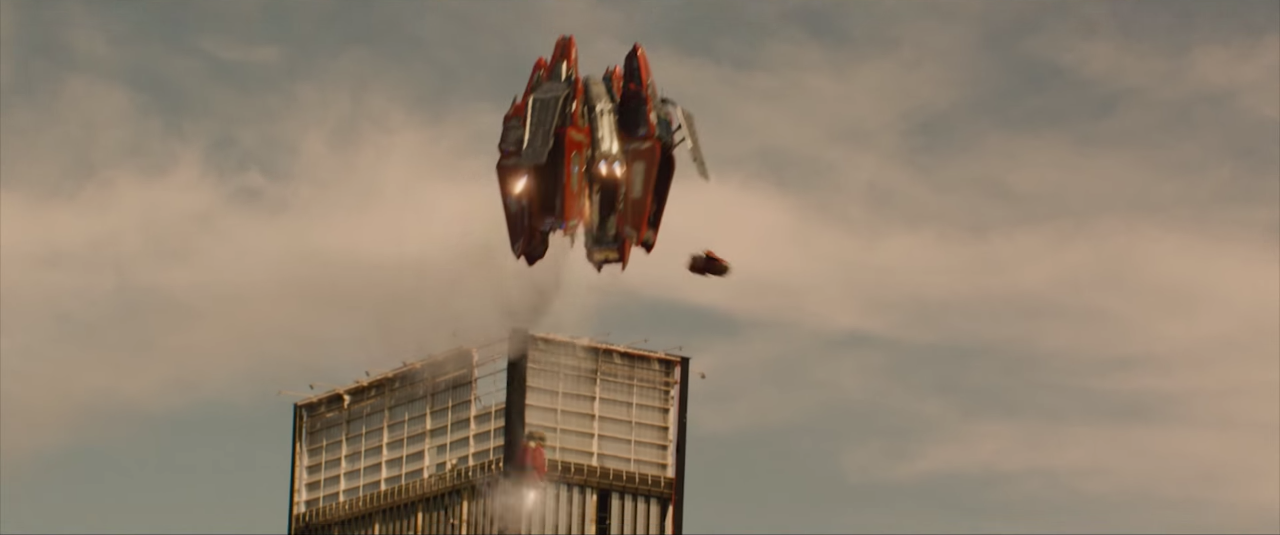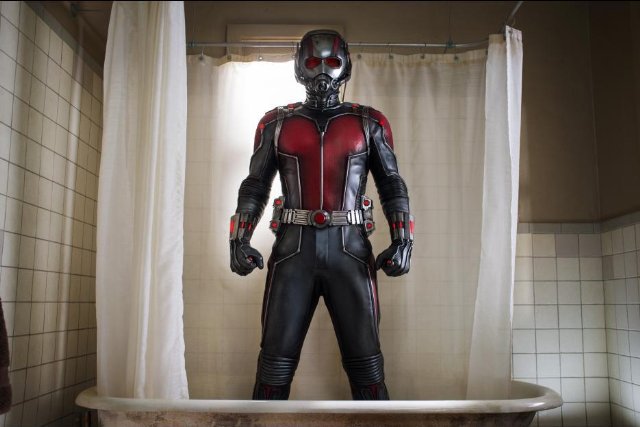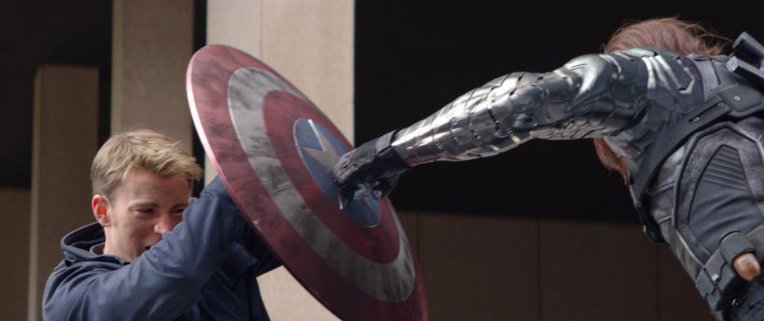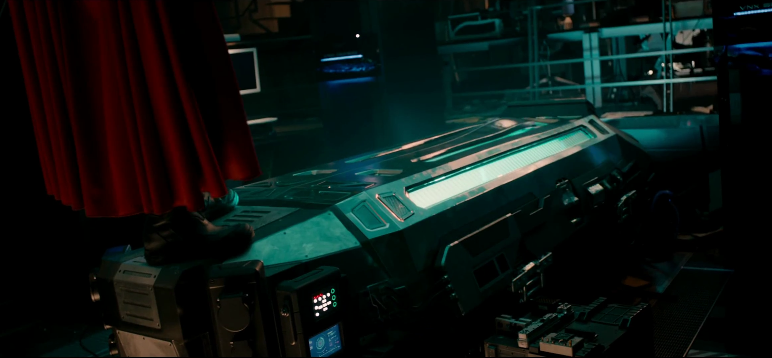ASU brings comic-book technology to life
From exoskeletons to high-power comms, the university's super-brains are finding ways to improve people's lives

Editor's note: This story is being highlighted in ASU Now's year in review. To read more top stories from 2015, click here.
From Wayne Enterprises to Stark Industries, the comic-book world is all about science and technology that wows. Bionic limbs. Flying suits of armor. Indestructible metals. Flying robot swarms. Communications devices that work across the globe and into space, under any kind of conditions.
Sixty years ago, it was all more science fiction than science fact. The technology didn’t even exist to fake superhero action in movies. Now flying people punching each other through buildings has become a summer cinema staple.
The bigger surprise is what you now see on the screen you will soon see in the sky, on the street and on your body. Most of the tech, or the foundations for building the tech, is being created now.
And it’s being created at Arizona State University.
No, there isn’t a helicarrier under construction beneath Sun Devil Stadium (although no doubt someone at the Ira A. Fulton Schools of Engineering is salivating at the thought).
Experimentation on humans being frowned upon, the Biodesign Institute is not likely to create a Captain America or a Hulk.
Following are ASU projects straight off the splash pages. They are all funded by the Defense Advanced Research Projects Agency (DARPA) of the U.S. Department of Defense. You know what DARPA does even if you’ve never heard of it, because it created the Internet, global positioning systems, stealth technologies and drones. Last year ASU won the second-highest number of grants awarded by DARPA to rising junior faculty stars. Overall the university has 21 ongoing DARPA projects.
And unlike superhero yarns, these advancements aren’t made to take down enemies, but to improve people’s lives.

The remote-controlled Hammer Drones in "Iron Man 2."
This and top photo (from "Iron Man") by Marvel Studios
As Cap says in “Avengers: Age of Ultron,” “I miss the days when the weirdest thing science created was me.”
Hammer Drones
Panagiotis Artemiadis is an assistant professor of mechanical and aerospace engineering in the School for Engineering of Matter, Transport and Energy, one of ASU’s Ira A. Fulton Schools of Engineering. He is also director of the Human-Oriented Robotics and Control Lab.
His project is on brain-swarm control interfaces. The goal is to understand how robot swarms can be controlled by one human.
“More specifically, we are working on understanding how human supervisors perceive and plan high-level functions for a swarm of semi-autonomous agents,” Artemiadis said. “We define basic principles of communication and utilize them in building the language of supervised autonomy between the human operator and the multi-agent system. The overarching goal is to unveil brain mechanisms that perceive multi-agent systems information, and define methods to extract centralized and/or de-centralized control commands for a multi-agent system.”
Applications include execution of military operations involving a human supervisor controlling a team of multiple robots (aerial or ground), or commercial applications including human-machine interfaces for more than one robot working on a common task like area reconnaissance or parcel delivery.
Captain America (Chris Evans) and his trusty, super-strong shield in "Avengers: Age of Ultron." Photo by Marvel Studios
Captain America’s shield
Titanium alloy is super-strong and super-light. Developing high fatigue-resistant titanium alloys is extremely expensive.
Yang Jiao, principal investigator of the Complex Materials Group and assistant in materials science and engineering, is working on a computational framework that will provide an integrated virtual platform for processing, manufacturing and fatigue-response testing for developing super-strong titanium alloys. The alloys can be used for structural parts and armor protection in military aircraft, naval ships and missiles.
Imagine what Jiao could do if vibranium — the material that makes up the Cap’s shield — actually existed.
Falcon (Anthony Mackie) makes his appearance in "Captain America: The Winter Soldier." Photo by Marvel Studios
Iron Man exoskeleton / Falcon jetpack
Engineering professor Tom Sugar is ASU’s Tony Stark, without the booze and emotional instability. Sugar runs the ASU Human Machine Integration Lab, where he and his students have created five workable, wearable exo suits. Two of them — one of which features a jet pack like the Falcon wears (without the wings) — make wearers run faster.
Sugar is currently working on designing and building a hip exoskeleton to help soldiers walk with a tactical vest. He built one backpack that was designed to help carry heavy loads, and he’s now working on a new version. An Iron Man suit capable of lifting a car is a ways off.
Maria Hill (Colbie Smulders) of S.H.I.E.L.D. tries to stay in communication with the whole team in "The Avengers." Photo by Marvel Studios
Avengers comms
The Avengers talk using tiny earbuds. They can communicate long distance, between New York and Eastern Europe, for instance, and in the middle of battles. Apparently it’s pretty good tech; it holds up in snow, dust, being thrown through a windshield, and other tough conditions.
Current military comms devices use older-generation integrated circuit fabrication processes, which are prone to aging, temperature and battery performance.
Bertan Bakkaloglu, a professor in the Department of Electrical Engineering, is developing a high dynamic range Analog-to-Digital Converter Integrated Circuit that would be used for calibrating and enhancing the integrity of high-performance military communication transmitters.
The circuit will constantly track and correct long-term degradation in current and future high-integrated military communication transceivers.
Iron Man brings his Hulk-buster armor down from storage in a satellite with his Orbital Drop Pod in "Avengers: Age of Ultron." Photo by Marvel Studios
Iron Man’s Orbital Drop Pod’s comms
When the Hulk is about to rip you in half and you need that Hulkbuster armor stored in orbit on a satellite, it’s not a good time for the call to get dropped.
That’s where Marco Saraniti’s two projects come in.
A professor in the School of Electrical, Computer and Energy Engineering, Saraniti is working on the electro-thermal scaling properties of electron devices. His project will result in extremely reliable electronic components both for ultra-low-power portable electronic devices (i.e., the type of electronics the military increasingly uses in the field) and space-based maintenance-free, high-power communication systems (satellites that can communicate with deep-space craft, communicating over very long distances, etc.). Iron Man should have no trouble calling down auxiliary armor from space when he needs it.
Saraniti’s other DARPA project involves creating software that can test the lifetime performance of transistors used in satellites.
There is no hiding the fact that you are playing Candy Crush when you use the phone of Tony Stark (Robert Downey Jr.) in "Iron Man 2." Photo by Marvel Studios
Tony Stark’s phone
Tony Stark rocks a phone that makes Apple’s latest look like Ma Bell. It’s see-through, with a flexible holographic display, and it does everything.
Including probably use radar.
That’s one project (out of four) Daniel Bliss is working on. An associate professor in the School of Electrical, Computer and Energy Engineering, Bliss is figuring out how radios and radar can work together.
With the telecommunications industry hovering around the $1.6 trillion mark, everyone wants more and more spectrum. But comms systems and radar interfere with each other. Bliss is working on developing new theories and approaches on how they can work together.
“We can be much smarter about using them,” Bliss said. “Think of them as one system. You will have wireless and radar on your watch or phone. … Very small-scale radar interfaces can be more accurate than you poking a glass screen.”
Straight out of Stark Industries.
Fox (Morgan Freeman) helps Batman monitor the entire city in "The Dark Knight." Photo by Warner Bros.
Batman’s cellphone radar system
To find the Joker in “The Dark Knight,” Batman uses sonar to image the entire city by linking together every cellphone there.
Bliss is doing this — just not with sonar.
“By employing disparate radios or radiofrequency systems as a single coherent system, communications and energy transmission can be achieved that far exceed anything attainable by a single radio,” he said. “This technology has the prospect of providing revolutionary improvements in system performance; however, disparate radio do not naturally want to act as a single coherent system. BLISS lab is developing the theory and technology to enable these concepts.”
BLISS stands for Bliss Laboratory of Information, Signals and Systems.
The inventions of Scott Lang (Paul Rudd in "Ant-Man") do not always turn out as planned. Photo by Marvel Studios
Hank Pym’s robot wasp swarm
The first Ant-Man’s inventions had a habit of going awry. (Ultron, anyone?) Tasked with border control, he created a swarm of wasp robots that then attacked anyone out on the street. Oops.
Note that Spring Berman’s description of her work contains the phrase “rigorous control framework.” No out-of-control robots here.
The assistant professor of mechanical and aerospace engineering is working on a way for average people to tell a robot insect swarm to perform a task in unpredictable environments where comms and GPS don’t work well.
Her framework will allow laypeople to automatically determine the makeup of a customized robot swarm optimized to complete a specific mission.
“Potential applications for this work include intelligence-surveillance-reconnaissance missions, target tracking, patrolling, security inspection, search and rescue, fetch operations, and detection of chemical, biological, and nuclear agents,” she said.
Bucky Barnes (right, played by Sebastian Stan), the presumed-dead best friend of Captain America, is back with a vengeance — and a bionic arm — in "Captain America: The Winter Soldier." Photo by Marvel Studios
Winter Soldier’s arm
The Hydra assassin and childhood friend of Steve Rogers has a bionic left arm packing a savage punch and a hand capable of crushing pavement.
But while he can pulverize a paint can, can he pet a kitten and feel its fur? Functionality of prosthetic hands has been limited because users can’t feel what they’re touching.
Stephen Helms Tillery is working on that. An associate professor in the School of Biological and Health Systems Engineering, he is working with a team to incorporate sensory feedback from a prosthetic hand into the overall design of prosthetic systems.
“Our team at ASU is specifically focused on the sense of touch, and will be implementing a protocol in which sensors from a prosthetic hand will drive stimulation of electrodes implanted into the nerves serving the hand,” Tillery said. “Our goal is to elicit clear sensations of finger movement as the hand is used to grasp an object, and sensations of touch as the fingers come into contact with that object.”
Good news for Cap. The next time the Winter Soldier catches his shield, it’s going to hurt like hell.
The Hydra hordes gather in "Captain America: The First Avenger." Photo by Marvel Studios
Mapping evil organizations
What if AIM, Hydra, and all those secretive super armies that seemingly exist as cannon fodder for our heroes could be mapped, found and wiped out once and for all?
A DARPA researcher created a program called Memex, which is like Google on steroids. Instead of endless links that need to be evaluated separately for usefulness and connections, it produces sophisticated infographics displaying the relationships between webpages. It searches the deep Web, where scientific reports, legal documents, multilingual databases and the like are found. Memex also searches the dark Web, the home of hackers selling stolen credit-card numbers, drug trafficking and encrypted sites. Possibilities for Memex include mapping organizations like ISIS and tracing shell companies.
Dominique Roe-Sepowitz, an associate professor of social work in the College of Public Service and Community Solutions and director of the Office of Sex Trafficking Intervention Research, has used Memex to investigate online sex trafficking.
The Regeneration Cradle in "Avengers: Age of Ultron" creates a synthetic being. Photo by Marvel Studios
The Regeneration Cradle
The Avengers’ in-house geneticist creates a Regeneration Cradle that prints human tissue. Blasted in the side by an alien-tech Hydra rifle? A stint in the Cradle will repair it. In “Avengers: Age of Ultron,” it ends up printing a synthetic being.
OK, so this is a huge stretch, but an ASU team is working on making folded synthetic polymers with biological function.
Wade Van Horn, an assistant professor in the School of Molecular SciencesThe School of Molecular Sciences is in the College of Liberal Arts and Sciences., and his team are developing a synthetic genetic polymer that can bind specific biologic targets. Their molecule will bind to another molecule to influence or change its behavior.
This “would give scientists vastly more molecules to work with in the search for new health solutions and greatly increase the likelihood that a molecule can be found to combat a given health threat,” said DARPA literature on the project.
More Science and technology

ASU receives 3 awards for research critical to national security
Three researchers in the Ira A. Fulton Schools of Engineering at Arizona State University have received grant awards under the Defense Established Program to Stimulate Competitive Research, or…
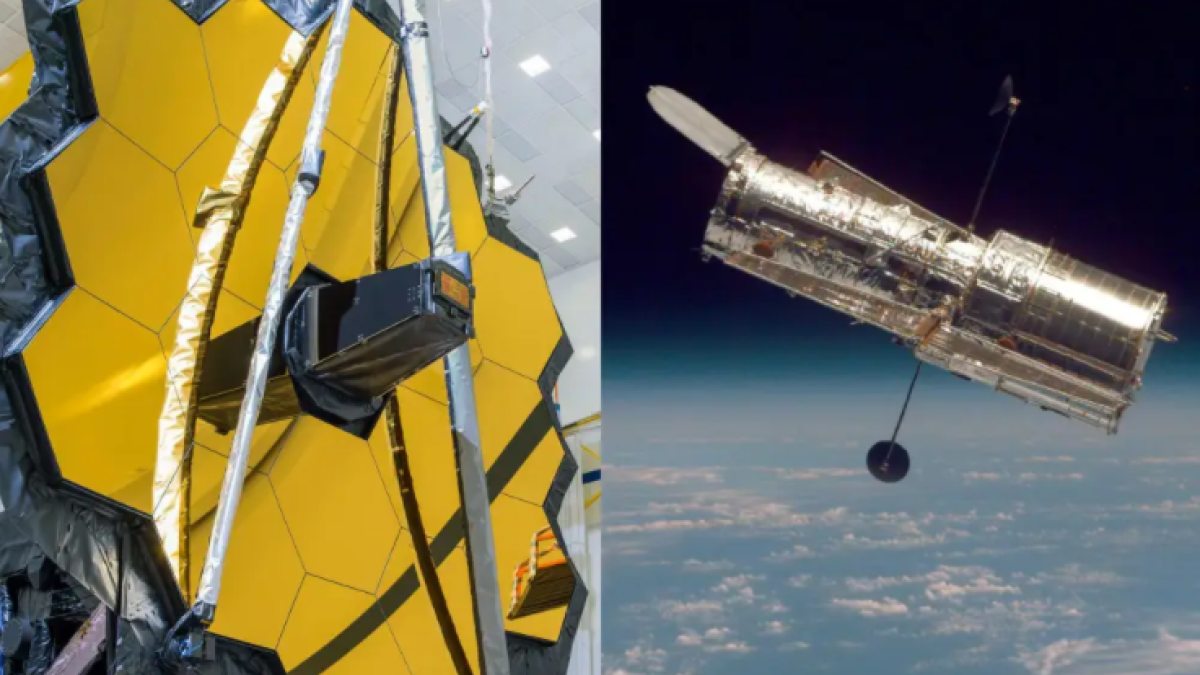
Celebrating 34 years of space discovery with NASA
This year, NASA's Hubble Space Telescope (HST) is celebrating its 34th anniversary of the world's first space-based optical telescope, which paved the scientific pathway for NASA's James Webb Space…

Making magic happen: Engineering and designing theme parks
The themed entertainment industry is widespread and diverse, encompassing everything from theme parks to aquariums, zoos, water parks, museums and more. The Theme Park Engineering and Design…


